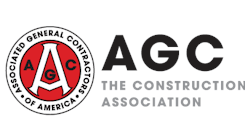Construction Industry Facing Higher Borrowing Costs, Softening Residential Sector, Marcum Index Says
The Marcum Commercial Construction Index for the second quarter of 2022 reports that the construction industry continues to face rising costs and shortages of both labor and materials, but now also must contend with a weakening economy and elevated borrowing costs.
The residential sector has weakened significantly, while the outlook remains dicey for the nonresidential sector.
The index is produced by Marcum’s National Construction Services group.
As of March, construction employment surpassed pre-pandemic levels, but the industry continues to grapple with unprecedented labor shortages.
“The industry unemployment rate fell to 3.5 percent in July 2022, the lowest level registered during the two-plus decades for which the Bureau of Labor Statistics has data,” said Dr. Anirban Basu, Marcum’s chief construction economist and author of the report. “Despite a modest decrease in construction industry job openings, contractors are clinging to workers as tightly as ever.”
In response to labor scarcity, workers have quit their jobs at a historic pace, frustrating contractors. “For their part, workers understand their negotiating leverage,” said Dr. Basu. “Many have discovered that the fastest way to a raise is to leave one employer for another. The 3.3 percent of the U.S. construction workforce that quit their jobs in March is the highest level on record.”
In addition to labor shortages and rising wage pressures, material prices remain a major headwind for contractors. The index reports that construction input prices are up 20.1 percent over the past year and 46.0 percent since the start of the pandemic. “Prices for certain inputs, like steel mill products, which are now up 124.3 percent since February 2020, have generated devastating pressure,” Dr. Basu said.
These factors have contributed to stagnant nonresidential construction spending, and Dr. Basu says the outlook for the private nonresidential sector could worsen in the coming months: “Given recent infrastructure and climate packages, public construction spending should be a driver of demand growth going forward, but the outlook for private construction volume is both murkier and less optimistic. Higher borrowing costs will serve as a significant headwind for construction of all types.”
Manufacturing construction is strong
Despite a somewhat bleak outlook, the Marcum index points to one segment that remains an outperformer. Spending on manufacturing-related construction is up 27.8 percent since the cyclical low observed in February 2021 and 20.3 percent over the past year. “No other nonresidential construction segment comes close to these rates of increase,” Dr. Basu said.
“A strong onshoring trend is driving growth of construction related to manufacturing. But it is not enough to offset declines and looming threats elsewhere,” said Joseph Natarelli, Marcum’s national construction leader. “Everyone continues to battle soaring material prices, as inflation on inputs for construction is more than double the overall rate, and the lack of available skilled labor is slowing project delivery. Since the onset of the pandemic, we’ve seen extraordinary activity and inconsistencies in the economy – so goes the country, goes the construction industry.”
To download the full Marcum Commercial Construction Index or for more information, visit www.marcumllp.com.





